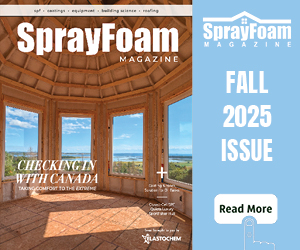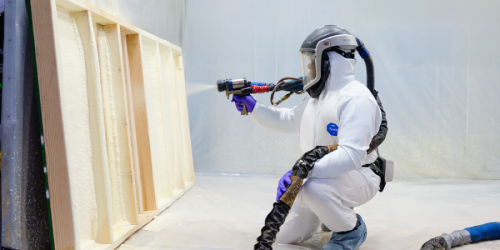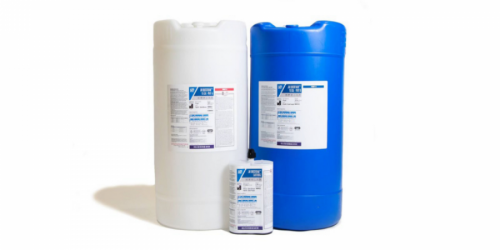Q&A Forums
attic crawl space ventilation Post New Topic | Post Reply
| Author | Comments |
|---|---|
|
Edward Brassington
Posted: Nov 15, 2007 10:12 PM
|
attic crawl space ventilation
I have a job that is scheduled for next week. We are spraying the underside of the roof from the peak to the eaves, in a one and a half storey home. We will be spraying four inches of soya based polyurethane foam. Once the foam is installed the customer is going to reinstall the knee walls from the floor to the roof. The knee walls will be approximately 4' from the floor to the roof.The customer is going to have heat and air conditioning in the house. His concern is that if the crawl spaces behind the knee walls are not vented into the occupied area of the house, is it possible that there will be a temperature difference between the occupied area and the crawl space, if so is there any chance of condensation forming on the back of the drywall in the crawl space. I did not think this was an issue but I just wanted some suggestions to reassure the customer and to educate myself. Thanks Ed Brassington |
|
mason
Posted: Nov 16, 2007 07:35 AM
|
Ed, I am assuming that sprayfoam will be installed to all surface areas that are in direct contact with the outside. So long as this is the case, the kneewalls will not affect the ability of the sprayfoam to insulate the outside temperature from the inside temperature. |
|
Edward Brassington
Posted: Nov 16, 2007 07:18 PM
|
Mason, Thank you for your reply. Yes we will be spraying all areas exposed to the exterior, roof deck, gables etc. The customers concern is that when the AC comes on, and cools down the house, the crawl space behind the drywall is theoretically going to be warmer than the rest of the house, as it will be a "dead air space". He is concerned that this may cause an area for condensation to form. That is why he is considering some flow through vents to balance the temperature between the house and the crawl space. Are these vents a good idea? |
|
mason
Posted: Nov 17, 2007 11:10 AM
|
The house will "leak" air naturally into this dead space and keep it within 6-8 degrees temperature of the rest of the house. However, if you decide to add registers or flow through vents to the space, the foam must be covered with a thermal barrier (gypsum board or equivalent) to pass codes. |





























